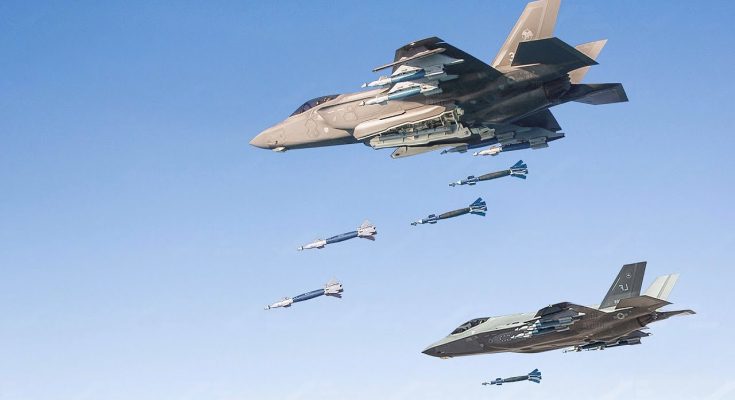How U.S. F-35 Jets Deal With Ground Targets During Stealth Missions
The F-35 Lightning II isn’t just a stealthy air-to-air combat jet—it’s also a precision ground-strike platform designed to dominate enemy defenses before they even know it’s there. During stealth missions, where avoiding detection is critical, the F-35 uses a combination of cutting-edge sensors, advanced targeting systems, and precision-guided munitions to identify, track, and eliminate ground targets with devastating effectiveness—all while staying off enemy radar.
1. First In, First to Strike
One of the F-35’s primary roles in a stealth mission is to “kick down the door” in heavily defended airspace. That means neutralizing key ground targets such as enemy radar sites, surface-to-air missile systems, command centers, and infrastructure. These are often high-value, high-threat targets that pave the way for other aircraft to safely enter the area.
2. Staying Invisible: Internal Weapons Only
To maintain stealth, the F-35 carries its weapons internally. It has two internal bays that can carry up to 5,700 pounds of bombs and missiles without increasing its radar cross-section. During stealth missions, this is critical. Once stealth is no longer a priority (like in a lower-threat environment), the F-35 can also carry weapons externally, boosting its total payload up to 18,000 pounds.
3. Next-Level Targeting
The F-35 is equipped with the Electro-Optical Targeting System (EOTS), a sensor pod built into the nose of the aircraft. EOTS allows pilots to detect, identify, and track ground targets using infrared and laser systems. This means the jet can spot a target like a missile launcher or a moving vehicle from long distances—even through smoke, fog, or at night.
In addition, its Distributed Aperture System (DAS) and AN/APG-81 AESA radar scan and track ground targets while providing real-time threat alerts. All of this data is fused into a single display inside the pilot’s helmet and cockpit, offering unmatched situational awareness.
4. Precision-Guided Munitions
When it comes time to strike, the F-35 can deploy a variety of smart bombs and missiles depending on the mission. Common weapons include:
-
GBU-31/38 JDAMs (GPS-guided bombs)
-
GBU-53/B StormBreaker (small diameter bomb with smart targeting)
-
AGM-154 JSOW (stand-off glide weapon for long-range attacks)
-
AGM-158 JASSM (stealthy cruise missile, in development for F-35 use)
These munitions can be dropped from high altitude and guided precisely to their targets, even moving ones, with minimal risk to the pilot or jet.
5. Data Sharing and Teamwork
The F-35 doesn’t work alone. Its sensor fusion and secure data links allow it to share targeting data with other aircraft, drones, and ground units. It can even silently guide in missiles fired from other platforms, making it a force multiplier on the battlefield.
In stealth missions, the F-35 acts like a silent assassin: it sees everything, hits hard, and disappears before the enemy knows what happened. By combining stealth, advanced sensors, and precision weapons, it turns ground strike missions into swift, calculated, and nearly invisible operations.



